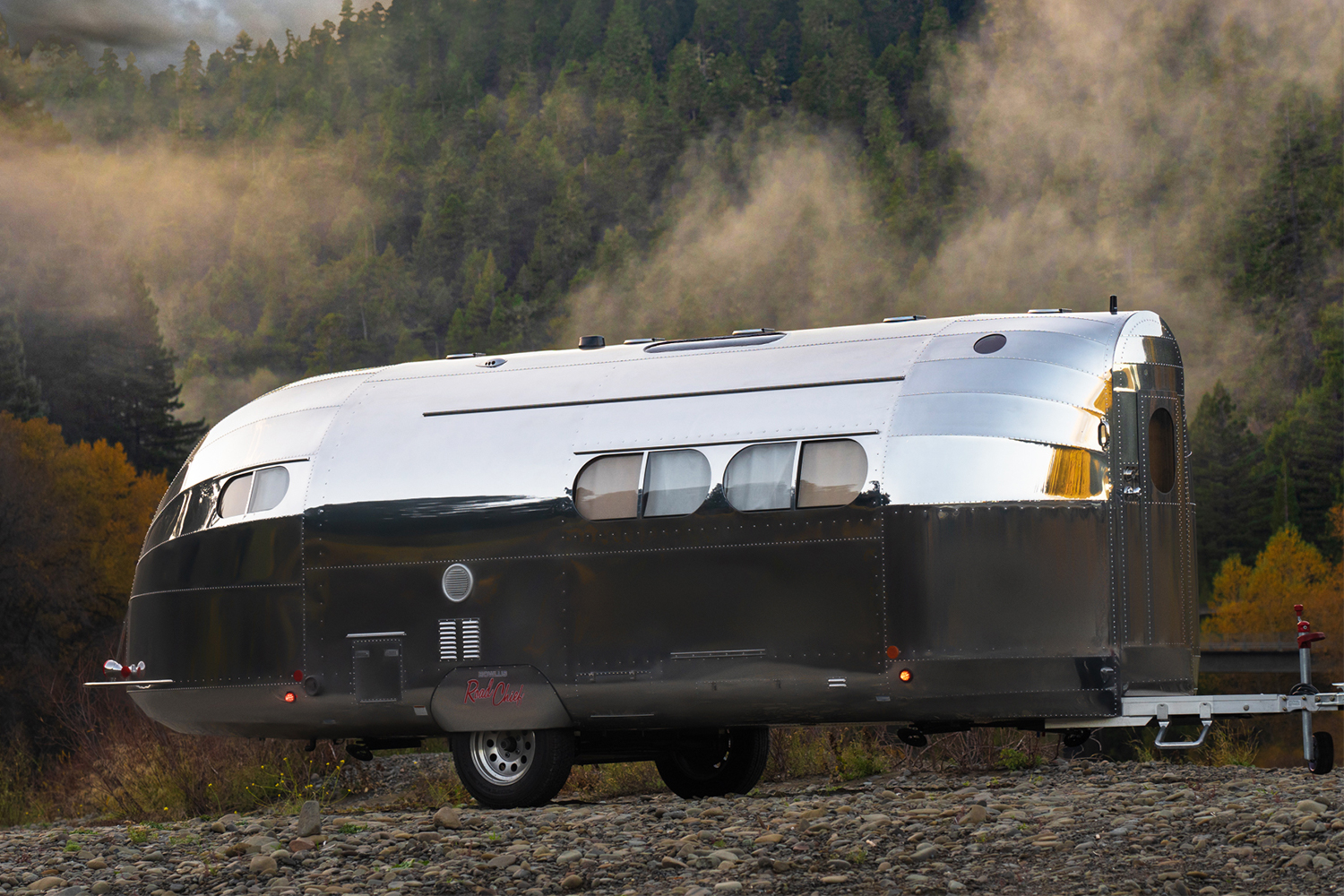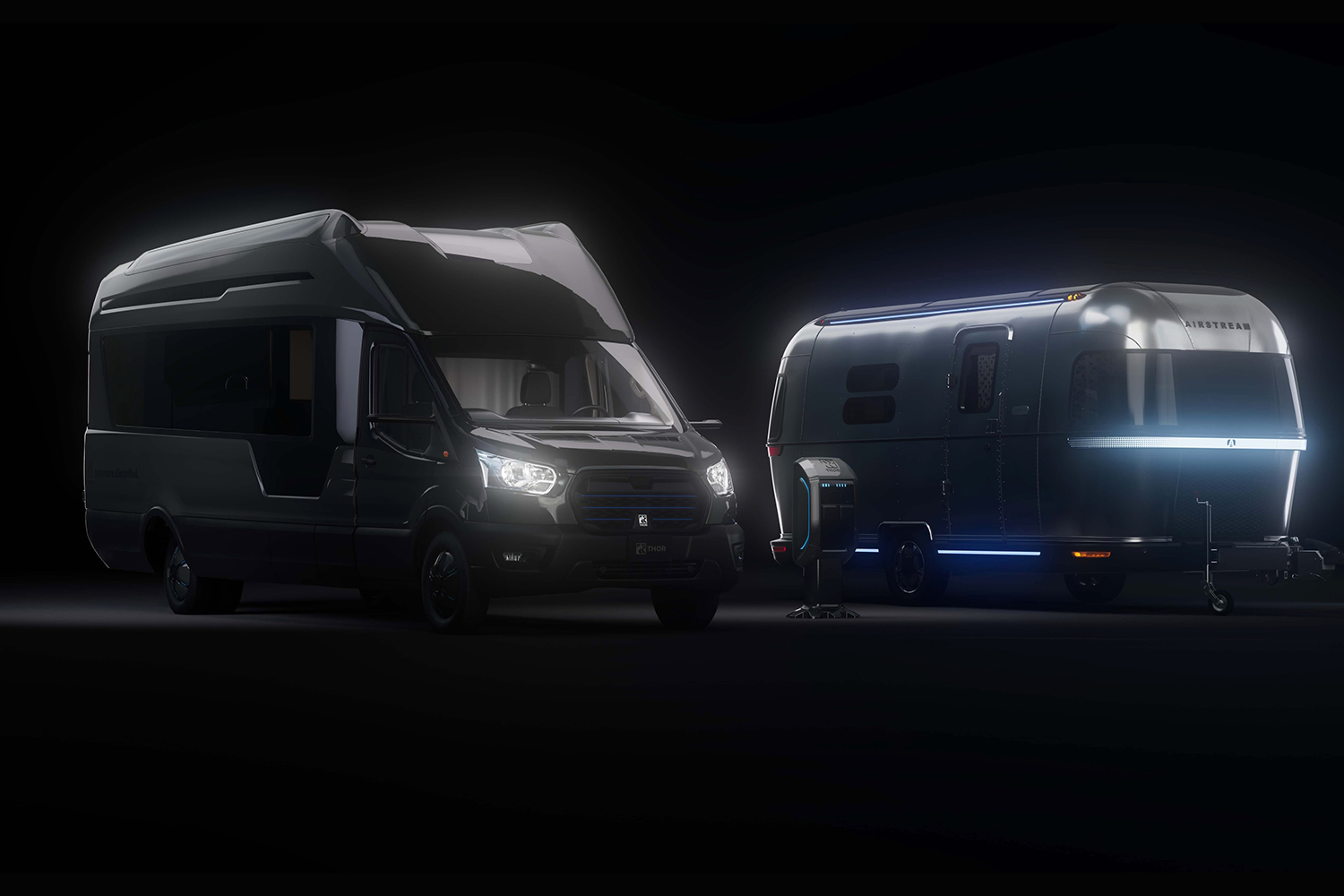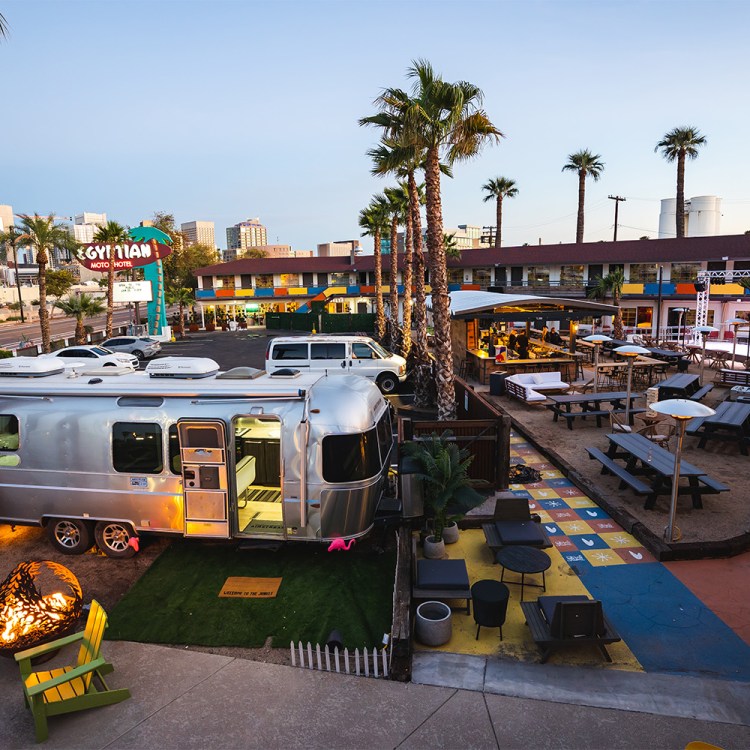Although the trend for trading traditional homes with life on the road was growing pre-pandemic — the Census Bureau estimated over 140,000 people were living in vans, recreational vehicles or boats in 2019 — #vanlife has since exploded. People from all walks of life are now following dreams of a more mobile lifestyle. (The hashtag currently has 13.6 million images associated with it on Instagram.) Let’s face it, the idea of falling asleep beside the ocean or waking up in the middle of a forest is undeniably appealing.
Designed and built to be lived in full-time, and ideal for the new wave of nomadic homeowners, the 2023 Living Vehicle caters to creative professionals who value traveling to off-the-beaten-path destinations but still need to log on for remote work. The trailer is less camper, more luxury-home-on-the-go, one that comes kitted out with a pioneering water generation system, solar panels galore, and a creative studio, among other eco-forward and high-finish features.
“Living Vehicle is positioned for a variety of individuals from adventure off-grid enthusiasts to those who love road tripping but don’t want to sacrifice luxury living quarters and daily conveniences,” says co-founder Matthew Hofmann, who established Living Vehicle in Santa Barbara with his wife Joanna five years ago. A licensed and LEED-certified architect, he became a figurehead in the mobile and small-living spaces industry with his company Hofmann Architecture, later co-founding the Airstream hotel concept Autocamp, which he developed and sold in 2015.
“I spent a decade designing, building and renovating all sorts of mobile spaces for unique customers, and seeing the possibilities of blending residential architecture in nature inspired me,” he says. “I wondered what we could create if we took it a step further.”

The 2023 Living Vehicle
While most conventional trailers are designed for weekend trips rather than as a primary residence, Living Vehicle’s water generation system, Watergen, is an attractive feature for anyone who wants to be equally self-sufficient off-grid as they are somewhere more suburban. Developed from military-grade technology, but a first in the travel-trailer space, it runs off the solar-connected battery system and works by creating water from thin air. Watergen’s Atmospheric Water Generator (AWG) system uses fans to pull in atmospheric moisture and extracts it via condensation before running it through a multi-step filtration and purification process. The result yields up to five gallons of mineral-rich drinking water a day, with excess stored in an overflow tank.
“Air conditioners produce condensation by cooling air, but being typically located on the roof of recreational vehicles means they will drain water there too,” explains Hofmann. “I was living in a trailer at the time and trying to find solutions to overcome the water dripping down the side of the unit. It sparked an idea that led me to think: Why can’t we repurpose that water for drinking? The technology for energy storage and lithium batteries didn’t exist back then, so this was a long time in the works, but it is often how many of our innovative ideas started. Joanna and I joke that just before we fall asleep we always devise a solution to some problem.”
The Living Vehicle is a game-changer in terms of sustainability, allowing users to capture, store and use power like no other travel trailer on the market, but the Hofmanns also paid close attention to the “thousand tiny little design decisions that go into creating a successful full-time living space.” There’s a chef’s kitchen and spa bathroom “built for tall people” that features high-end finishes such as teak wall panels and a towel warmer, while a luxury housekeeping package can include a washer/dryer unit and a centralized vacuum. But for today’s digital nomads, a functional workspace is essential, and Living Vehicle delivers here, too, thanks to its Apple-powered Creative Studio, which stows neatly underneath a Murphy bed. The optional, fully loaded suite of top tech (it comes with a 32-inch Pro Display XDR, 27-inch Studio Display, Macbook Pro, studio-quality mics, 1080-pixel camera and six-speaker sound system) will appeal to animators, developers and content producers who rely on powerful hardware to perform their job from anywhere.
With production limited to 25 Living Vehicles annually and a six-figure price point (there are various models available, starting at $339,995), Hofmann says it’s the ultimate mobile platform for the customer who values complete and fierce independence.
“My vision for ultimate freedom is a living space that doesn’t require you to be connected to any one utility. Go where you want, when you want and stay for as long as necessary. With the advent of electric tow vehicles, the near-term vision is to store solar energy and charge the truck too, bringing the concept of a fuel-free world one step closer,” he says. “There’s simply nothing else like it.”
This article was featured in the InsideHook LA newsletter. Sign up now for more from the Southland.





















